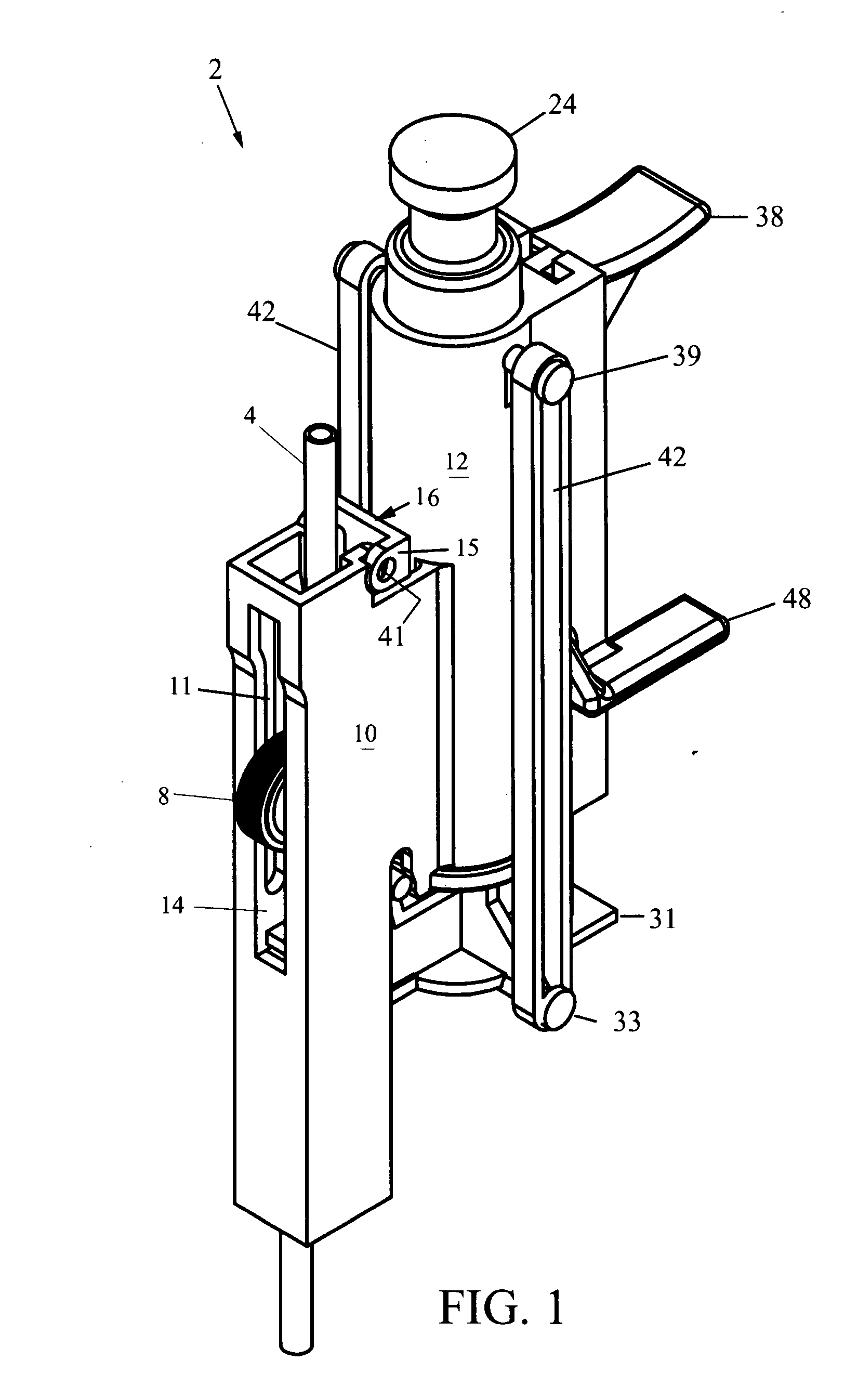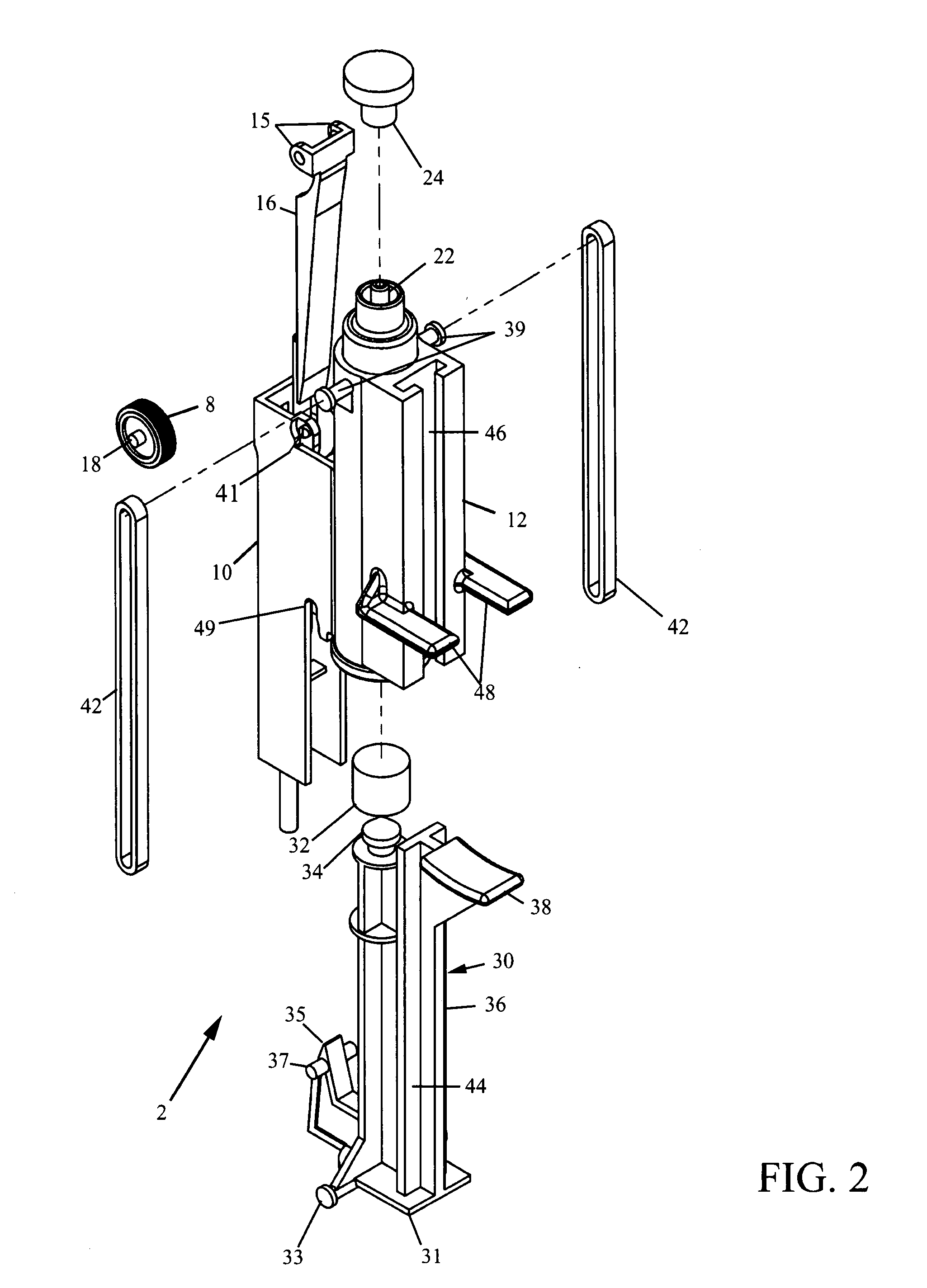IV regulator with integral flushing mechanism
a technology of iv regulator and flushing mechanism, which is applied in the direction of process and machine control, instruments, other medical devices, etc., can solve the problems of large volume of iv fluid administration, wasteful supply use, and complicated like system, so as to improve safety, simplify the process, and ensure the effect of bolus flushing
- Summary
- Abstract
- Description
- Claims
- Application Information
AI Technical Summary
Benefits of technology
Problems solved by technology
Method used
Image
Examples
first embodiment
[0034]FIG. 1 is a perspective view of a regulator 2 for IV tubing that interrupts normal flow to flush for a specific period of time before returning to pre-flush flow. The regulator 2 generally comprises an elongated housing with main section 10 and a plunger section 12. The main section 10 is formed as a three-walled elongate trough, and the existing IV tubing 4 runs through the trough of main section 10. A roller-clamp 8 is rotatably seated across the trough of the main section 10 and protrudes out of an aperture 14 in the front face of main section 10.
[0035]FIG. 2 is an exploded diagram of the regulator 2 which shows that roller-clamp 8 comprises an annular hub with rubber tread mounted thereon, and opposing posts 18 forming an axle. These posts 18 of the roller-clamp 8 are carried in vertical notches 11 formed inside the trough of the main section 10, and the roller-clamp 8 is free to slide up and down along the notches 11 within the trough of the main section 10. In operation...
second embodiment
[0044]FIG. 5 is a perspective view of a regulator 102 for IV tubing 104 that interrupts normal flow to flush for a specific period of time before returning to pre-flush flow. The regulator 102 generally comprises an elongated housing with main section 112 and compressible lever section 114 mounted pivotally thereon. The main section 112 is formed as a trough, and the existing IV tubing 4 runs through the trough of main section 112. A roller-clamp 108 is rotatably seated across the trough of the main section 112 and protrudes out of an aperture 110 in the front face of main section 112.
[0045]As best seen in the side cross-section of FIG. 6 and the front cross-section of FIG. 7, the IV tubing 104 runs internally through the main section over roller-clamp 108. While not explicitly shown, it is necessary to maintain a certain degree of friction between the roller-clamp 108 and the main housing section 112, and between the tubing 104 and the housing. Conventional rubber grommets may be ...
PUM
 Login to View More
Login to View More Abstract
Description
Claims
Application Information
 Login to View More
Login to View More - R&D
- Intellectual Property
- Life Sciences
- Materials
- Tech Scout
- Unparalleled Data Quality
- Higher Quality Content
- 60% Fewer Hallucinations
Browse by: Latest US Patents, China's latest patents, Technical Efficacy Thesaurus, Application Domain, Technology Topic, Popular Technical Reports.
© 2025 PatSnap. All rights reserved.Legal|Privacy policy|Modern Slavery Act Transparency Statement|Sitemap|About US| Contact US: help@patsnap.com



